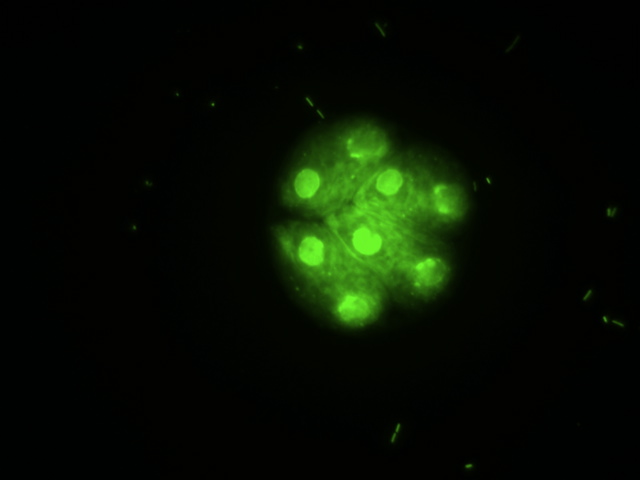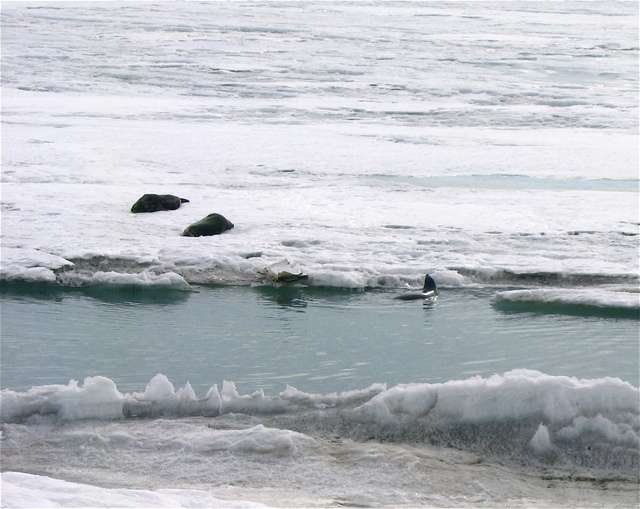( Log In ) Log In is for TREC Teachers & Researchers only
  |
| Dena_Rosenberger |
 Jan 3 2006, 08:20 AM Jan 3 2006, 08:20 AM
Post
#1
|
 TREC Teacher    Group: TREC Team Posts: 96 Joined: 1-November 05 Member No.: 22 |
Can I “Cell” You Something?
January 2, 2006 Happy New Year! For those interested in things Antarctic and some fine journalism, check out the weekly Antarctic newspaper at http://AntarcticSun.usap.gov This week's Sun shows the photo contest winners. Hello from the Ice! For additional Antarctic pics, check out the Gallery. Where’s Rosenberger? Ross Island, Antarctica Incredible Employment Opportunity for college students! If you know ANY college student who would like to work here at McMurdo Research Station in Antarctica from October to February this coming year, the application is attached (send this to anyone you can think of who might be interested - applications are due at the beginning of February). There is an internship program here for college students - ALL expenses paid (including travel) AND you get paid about $7000! It is kinda’ like a year abroad thing, but you have absolutely no expenses. Of the jobs listed on the application, the best would be "General Assistant" because they get to go everywhere (very physical) and next best is "Shuttle Driver" because you get to meet a lot of people (very social). This coming year they will have General Assistants that will be assigned to the science teams, so you could be out at a field camp! For students on the quarter system, you would probably be home for Spring quarter, but most of the student interns here just go traveling through New Zealand (think Lord of the Rings scenery) and Australia on the free ticket home when they get off the ice. Awesome deal. For more information and an application, contact me. Hurry! Apps due February 1. In the Lab Chlamydomonas intermedia is a very large genus of unicellular, motile flagellates occurring in stagnant water and on damp soil, in freshwater, seawater, and even in snow as "snow algae". The algae in Pony Lake were identified as Chlamydomonas by Ernest Shackelton’s expedition a century ago. Now, we are studying this algae again in hopes of using them to keep an eye on global climate change.  > Chlamydomonas intermedia (photo by Sarah Spaulding) Markus has been sitting at the microscope almost 24 hours per day lately, it seems. He is counting the cells and bacteria from water samples out of Pony Lake as well as from our photolysis experiments on the roof. He tells me that cell counts give us a basic understanding of the health of a body of water. The nutrients available in the lake and the cell/bacteria counts are linked, so as the as the nutrients increase, the number of cells should increase. Our group is studying how the bacteria population changes as the summer comes and goes. He is also studying how UV light affects these bacteria. We know UV damages these microbes at the bottom of the food chain, so it is of interest to the scientific community to see how the increased amount of UV light allowed to reach the Earth from the ozone hole will affect the bacteria.  To count a sample of bacteria, first Markus “fixes” them (this is a nice way of saying “kills”) so that they stop dividing. Then, he adds a fluorescent stain that complexes with either the DNA or the RNA in the cell. The bacterial shapes seen are rods (short, straight), crescents (crescent), coccoidal (round), and filamentous (strands). See if you can pick them out in the photos. Sometimes they form very strange patterns:  I call this one "Walking Man." Bacteria are very much smaller than algae cells. In the photo above, in the bottom right corner, there is a large, bright partial Chlamydomonas cell in the picture. > Chlamydomonas with fluorescent dye:  We also were able to put a scale onto one of the slides. This scale shows 10 micrometers, or 0.00001 meter. Bacteria are VERY small!  Yo (lead scientist), Ryan (newly-arrived post-doc), Jack (friendly Utility Tech), and I took a walk of several miles along a newly opened trail that winds around in the hills behind McMurdo Station. It is called the Hut Point Loop Trail and it takes about an hour (that is, if you don’t stop to take too many pictures!).  What a nice surprise! There were some Weddell Seals lying on the sea ice below the historic hut.  While we were watching, another seal popped up through the crack in the ice and swam around, looking at the seals on the ice. After a bit, it dove back down through the ice to go fishing. > Can I Share Your Ice?  Did you know? The four-year project to prove that an overland traverse from McMurdo Station to the South Pole came to an end on December 23 at the South Pole when the three tractors, a Pisten Bully, and other support, cargo, and fuel vehicles pulled in after 43 days and 1600 kilometers on the “road.” They were actually making the road as they went, crossing huge crevasse fields and plowing through deep, soft snow. They rested for five days then began the long journey back on December 28. The purpose of this project is to determine if it is feasible to get supplies to the South Pole by vehicle rather than airplane, which is extremely expensive.  Current Conditions at McMurdo Station An upper level high pressure ridge is giving fair skies with strong winds. Right now: Winds from the east at 20 knots Pressure: 29.215 inHg Temperature: 21 oF/-6 oC with wind chill: -9 F/ - 23 C Sunset: February 20 at 1:38 am |
| Lindsay Ferguson |
 Jan 10 2006, 02:25 AM Jan 10 2006, 02:25 AM
Post
#2
|
|
Unregistered |
you are so cool ms. rosenberger. when are you getting back? soon i hope. i want you to know i am studying diligently for my chem final. we have been working very hard on our lab; trying to follow every step so as not to loose any mass for our final massing. i love the pictures of seals. are those the same seals that live around here? can you get close to them like you can with the penguins? what do you think you are going to miss the most when you head on home? have you done the rock wall yet?
come home soon! love, lindsay |
| Dena_Rosenberger |
 Jan 10 2006, 09:01 PM Jan 10 2006, 09:01 PM
Post
#3
|
 TREC Teacher    Group: TREC Team Posts: 96 Joined: 1-November 05 Member No.: 22 |
Hi Lindsay:
Well, I am glad to hear that you are studying for your chem final. Wow! You have asked a lot of questions! Guess what? I will see you on TUESDAY, and we can talk about Antarctica all day because that is the only thing I think I will be able to talk about! Miss you and see you very soon! Ms. R QUOTE(Lindsay Ferguson @ Jan 10 2006, 02:25 AM) you are so cool ms. rosenberger. when are you getting back? soon i hope. i want you to know i am studying diligently for my chem final. we have been working very hard on our lab; trying to follow every step so as not to loose any mass for our final massing. i love the pictures of seals. are those the same seals that live around here? can you get close to them like you can with the penguins? what do you think you are going to miss the most when you head on home? have you done the rock wall yet? come home soon! love, lindsay |
  |
2 User(s) are reading this topic (2 Guests and 0 Anonymous Users)
0 Members:

|
NSF Acknowledgment & Disclaimer | Time is now: 12th November 2024 - 11:42 AM |
Invision Power Board
v2.1.7 © 2024 IPS, Inc.









